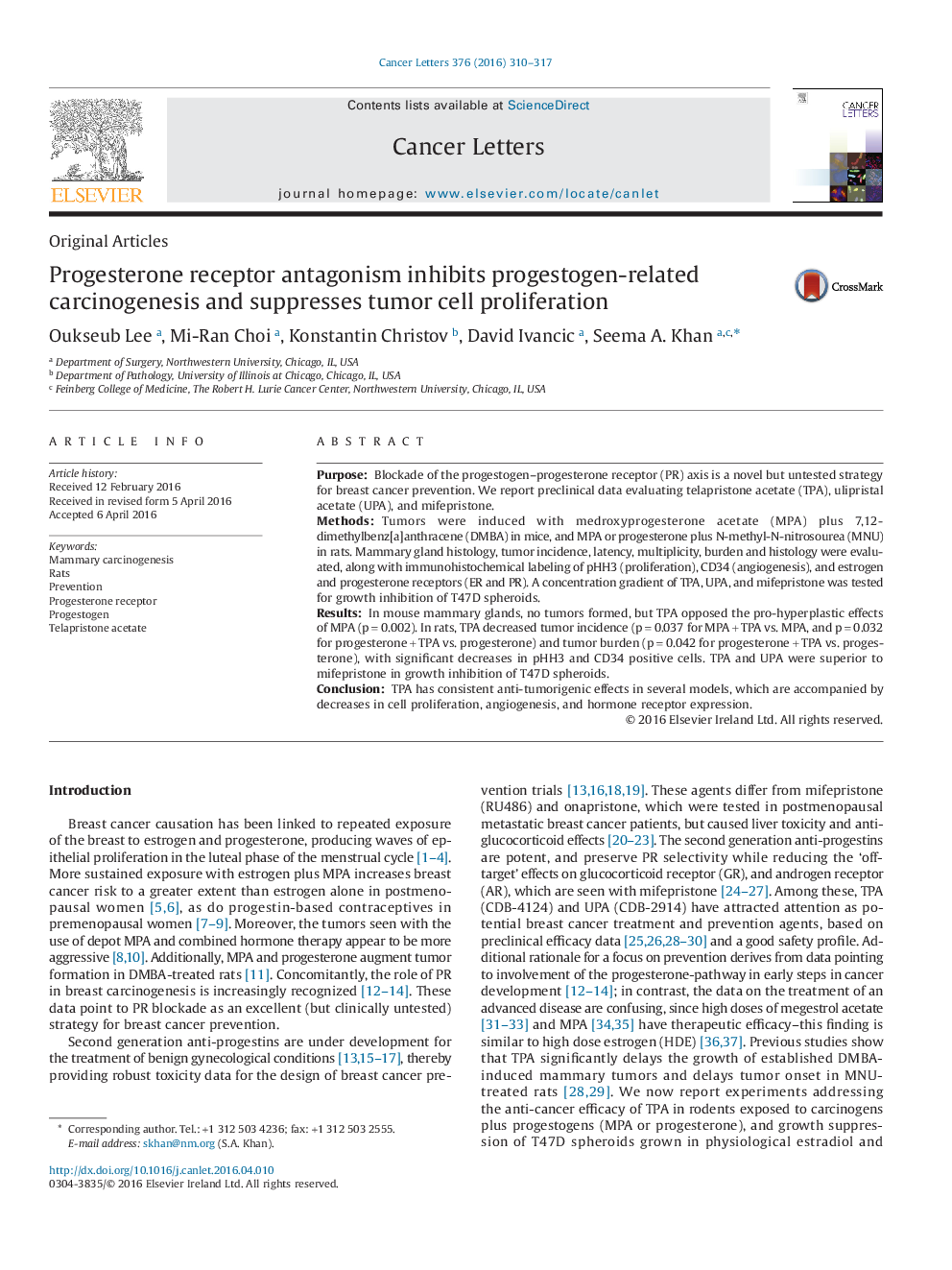| Article ID | Journal | Published Year | Pages | File Type |
|---|---|---|---|---|
| 2112286 | Cancer Letters | 2016 | 8 Pages |
•Blockade of the progestogen-PR is an untested strategy for breast cancer prevention.•TPA opposed the pro-hyperplastic effects of MPA in mouse mammary glands.•TPA decreased tumor incidence, pHH3, angiogenesis, and ER/PR expression in rats.•Physiological estradiol plus progesterone increased the growth of T47D spheroids.•TPA and UPA are superior to mifepristone in growth suppression of T47D spheroids.
PurposeBlockade of the progestogen–progesterone receptor (PR) axis is a novel but untested strategy for breast cancer prevention. We report preclinical data evaluating telapristone acetate (TPA), ulipristal acetate (UPA), and mifepristone.MethodsTumors were induced with medroxyprogesterone acetate (MPA) plus 7,12-dimethylbenz[a]anthracene (DMBA) in mice, and MPA or progesterone plus N-methyl-N-nitrosourea (MNU) in rats. Mammary gland histology, tumor incidence, latency, multiplicity, burden and histology were evaluated, along with immunohistochemical labeling of pHH3 (proliferation), CD34 (angiogenesis), and estrogen and progesterone receptors (ER and PR). A concentration gradient of TPA, UPA, and mifepristone was tested for growth inhibition of T47D spheroids.ResultsIn mouse mammary glands, no tumors formed, but TPA opposed the pro-hyperplastic effects of MPA (p = 0.002). In rats, TPA decreased tumor incidence (p = 0.037 for MPA + TPA vs. MPA, and p = 0.032 for progesterone + TPA vs. progesterone) and tumor burden (p = 0.042 for progesterone + TPA vs. progesterone), with significant decreases in pHH3 and CD34 positive cells. TPA and UPA were superior to mifepristone in growth inhibition of T47D spheroids.ConclusionTPA has consistent anti-tumorigenic effects in several models, which are accompanied by decreases in cell proliferation, angiogenesis, and hormone receptor expression.
